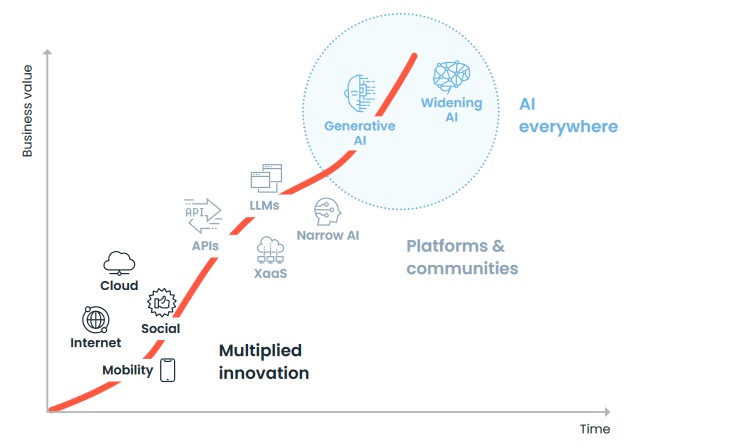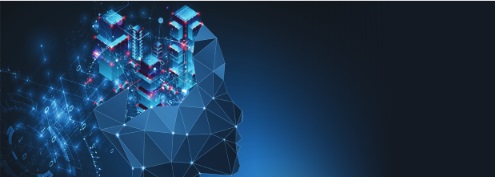In APMdigest's 2025 Predictions Series, industry experts — from analysts and consultants to the top vendors — offer predictions on how Observability and related technologies will evolve and impact business in 2025. Part 5 covers user experience, Digital Experience Management (DEM) and the hybrid workforce.
Re-engineering user experience in the age of AI
Customers have always been a priority, but there is another group of stakeholders that are equally as important to an enterprise's success — its employees. However, the exponential rise of emerging tech like GenAI and the pressure to adopt this tech has thrown the user experience into disarray. Now is the time for companies to invest in re-imagining and redesigning their existing technology architecture. While the upfront cost might seem steep, their business's long-term success depends on it.
Rajesh Ganesan
President, ManageEngine

MILLISECONDS - THE NEW STANDARD FOR DIGITAL PERFORMANCE
Milliseconds Define the New Standard for Uptime and User Experience: Milliseconds will become a critical metric for digital performance, as even slight delays accumulate to create significant interruptions in user experience. As our latest benchmark report indicates, sites experiencing full-second delays are not uncommon. However, when each call in a transaction adds just a few milliseconds, the aggregated impact can extend to seconds, which users perceive as frustratingly slow. In a world where "slow is the new down," companies will treat sub-second optimizations as the gold standard, investing in advanced tools to monitor and minimize these incremental delays and to maintain a seamless, high-speed digital experience for customers.
Mehdi Daoudi
CEO and Founder, Catchpoint
DIGITAL EXPERIENCE MONITORING
Digital Experience Monitoring (DEM) Moves to Center Stage: As hybrid infrastructure, AI, and cloud adoption accelerate, DEM will become essential for maintaining seamless digital performance. Companies will see DEM as a competitive edge, moving from reactive fixes to proactive experience management, as Gartner and industry experts spotlight its impact on customer retention and operational resilience.
Mehdi Daoudi
CEO and Founder, Catchpoint
In 2025, Digital Experience Management (DEM) will take significant strides as companies increasingly leverage real-time user data and AI to deliver more intuitive, adaptive digital experiences. DEM will move beyond simply tracking engagement or identifying UX tweaks — it will begin to anticipate user needs and adjust interfaces to offer smoother, more supportive interactions. For example, platforms may start to recognize moments of user frustration and proactively suggest helpful resources or minor adjustments that improve usability on the spot. As companies invest in these advanced DEM tools, they'll become better equipped to meet shifting customer expectations, fostering stronger user satisfaction and loyalty. While there's more to achieve, 2025 will be a pivotal year in setting new standards for digital experiences that adapt to the user in real time.
David Hunter
CEO, Local Falcon
INTERNET STACK MANAGEMENT
Digital Experience Becomes a Business Imperative, Powered by a Strong Internet Infrastructure: Digital experience will emerge as a critical pillar of business success, supported by robust internet infrastructure. Each layer of the internet stack — DNS, APIs, CDNs, and other foundational components — will serve as the backbone of IT operations, ensuring the performance and reliability needed for an optimal digital experience. As businesses increasingly depend on seamless digital interactions, monitoring and optimizing these layers will become as essential as financial oversight. Companies will prioritize internet stack management to safeguard digital experience, recognizing it as a key driver of customer satisfaction, loyalty, and overall business growth.
Mehdi Daoudi
CEO and Founder, Catchpoint
MOBILE APM TRANSFORMS INTO MOBILE DEX
In 2025, Mobile Application Performance Management (APM) will transform into a comprehensive Mobile Digital Employee Experience (DEX) framework, reshaping the digital landscape for both customer and employee experiences. As mobile devices become primary work tools, the demand for seamless, uninterrupted performance will make real-time monitoring essential for detecting and resolving issues instantly. Mobile DEX will go beyond traditional performance metrics to prioritize battery life optimization, data usage minimization, and resource efficiency, directly supporting employee productivity throughout the workday. Additionally, this shift will emphasize employee satisfaction, incorporating real-time feedback and indicators like device health, Wi-Fi strength, and overall device usability to create a more holistic view of the mobile experience. This evolution will position mobile DEX as a strategic advantage, aligning mobile technology with the dynamic needs of today's workforce and making the mobile digital experience a crucial driver of employee satisfaction and productivity in the modern workplace.
Colleen Marinelli
Senior Product Marketing Manager, DEM, Riverbed
EUEM EVOLVES INTO DEX
In 2025, End-User Experience Management (EUEM) will evolve into a broader Digital Employee Experience (DEX) framework, reflecting a shift towards a holistic view of the employee's digital environment. While EUEM has traditionally focused on application and device performance, DEX expands this to encompass the full spectrum of digital interactions employees have with technology, making employee experience a core priority. Leveraging AI and machine learning, DEX will provide highly personalized, automated support, proactively resolving issues before they impact productivity. Real-time feedback loops will empower employees to report satisfaction and issues instantly, refining performance analytics and generating valuable insights into the digital experience. This comprehensive approach will unify the technology ecosystem, focusing not only on productivity but also on fostering employee satisfaction by prioritizing a seamless, supportive digital experience. As hybrid and remote work redefine the modern workplace, DEX will enable organizations to provide proactive, meaningful support that meets the evolving needs of employees, solidifying the digital experience as a central factor in workplace success.
Colleen Marinelli
Senior Product Marketing Manager, DEM, Riverbed
Hybrid Workforce Becomes Permanent
Since the pandemic receded, businesses of all kinds have pursued a hybrid path — with some work being done from offices, and some from home or other remote locations. On one extreme are companies such as JPMorgan, which requires senior leaders to return to the office five days a week — but they are now an outlier. Some large technology companies have implemented policies requiring their people to spend at least two days per week in the office. But that means people are free to work from remote offices like a WeWork or a home office for the other three days. This increases the need for secure endpoint protections to safeguard those remote employees. Even in this scenario, employees are working outside of the office more often than in the office — a big shift from pre-pandemic working environments. Many observers thought there would be a big return wave when everyone goes back into the office, but that is not happening. Hybrid work is here to stay, whether at big, midsize, or small companies. That poses a real challenge for IT teams to manage endpoint devices and ensure that everyone has a consistent experience no matter where they are working.
Doug Murray
CEO, Auvik
Work-from-anywhere isn't going anywhere. Forward thinking companies are taking the lessons they learned from supporting home workers through the pandemic to create more efficient work environments for employees out of the office. Despite the media attention on some large company return to work mandates in 2024, more than two-thirds of US employers have some type of remote work flexibility. Expect this trend to continue through 2025 and beyond for two reasons. First, Gen Z, the first true digital-first generation is fast becoming the primary new talent pool. Second, secure remote connectivity now offers the speed, performance, and security to match the in-office environment.
Prakash Mana
CEO, Cloudbrink
HYBRID WORK ADVANCES TELEMETRY DATA
Hybrid work has significantly advanced the availability of telemetry data for IT Ops Analytics, which will only continue to increase as more organizations return to the office in 2025. How people connect with each other, where they physically are when they connect, and the IT friction they face are all data that can be used to inform future planning, as well as IT and facilities investment priorities. Consider looking to integrations in existing software platforms (i.e. Microsoft Teams Rooms data) as a new source of telemetry that can power ITOps analytics.
Daniel Root
Head of Global Strategic Alliances, Barco ClickShare
HYBRID WORK DRIVES INNOVATION IN DEVICE MANAGEMENT
The hybrid work model will hit a tipping point, as employers push for more in-office presence while employees increasingly demand flexibility. This growing divide will catalyze innovation in device management. Many companies have already invested in streamlining onboarding and remote support, but now the challenge will be adapting those systems to also serve in-office environments. The key will be prioritizing automation and efficiency which reduces the need for manual fixes and enhances the user experience across all work settings. As businesses navigate this tension, the future of device management will focus on creating seamless and flexible solutions that balance both employee autonomy and the need for in-person collaboration.
Weldon Dodd
Evangelist and SVP, Global Partnerships, Kandji
Go to: 2025 Observability Predictions - Part 6





